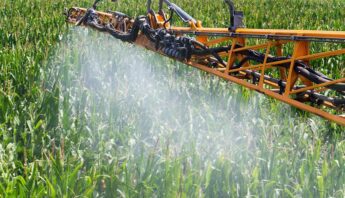A combination of commonly used pesticides can triple the risk of Parkinson's disease (PD), according to a new study released last week in the European Journal of Epidemiology. People who work and/or live near fields sprayed with paraquat, maneb and ziram are more likely to suffer from the degenerative central nervous system disorder, for which there is no cure.
Researchers note that their findings provide the first strong evidence in humans that exposure to several pesticides increases risk of PD more than exposure to individual chemicals alone.
The scientists measured exposure to the three pesticides over a period of several years in California's Central Valley, and tracked a group diagnosed with Parkinson's disease and a control group.
Exposed at work & home
Study subjects either worked or lived near fields sprayed with the chemicals — or both. Dr. Beate Ritz, lead author of the study and professor of epidemiology at UCLA's School of Public Health, reports that those exposed at their workplace had a greater risk of the disease than those exposed at home, while
. . . people who both live and work near these fields experience the greatest PD risk. These workplace results give us independent confirmation of our earlier work that focused only on residences, and of the damage these chemicals are doing.
In the earlier study Dr. Ritz refers to, published in April 2009, the research team found that people who lived near fields where maneb and paraquat were sprayed had a 75% increase in their risk for PD. Another study published earlier this year by the National Institutes of Health found that people who used either paraquat or rotenone were 2 1/2 times more likely to suffer from Parkinson's.
Pesticides have long been suspected of playing a role in the development of Parkinson's in part because of the high rates of the disease among farmworkers. Many pesticides kill insects by disrupting nervous system function, and many are also known to be neurotoxic to humans, with impacts on the development and function of children's nervous systems particularly well documented.
Importance of cumulative impacts
A study released online in March in the journal NeuroToxicology examined the biochemical and toxicological evidence of the links between pesticides and PD – and called for more evaluation of the cumulative effects of exposure to multiple chemicals. Last week's study provides exactly such evidence.
Learn more >> A new online resource on such cumulative impacts of chemicals on human health was launched last month by our colleagues at the Science and Environmental Health Network and the Collaborative on Health and the Environment. According to SEHN scientist and PAN Board Member Dr. Ted Schettler, the new website will be expanding in the coming weeks and months with in-depth collections of research on cumulative effects.







